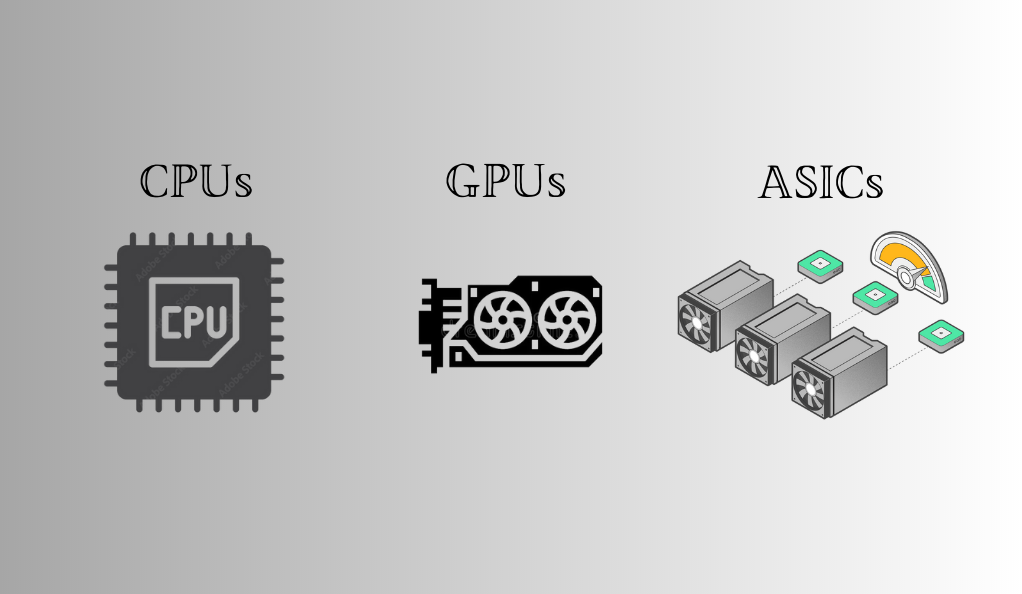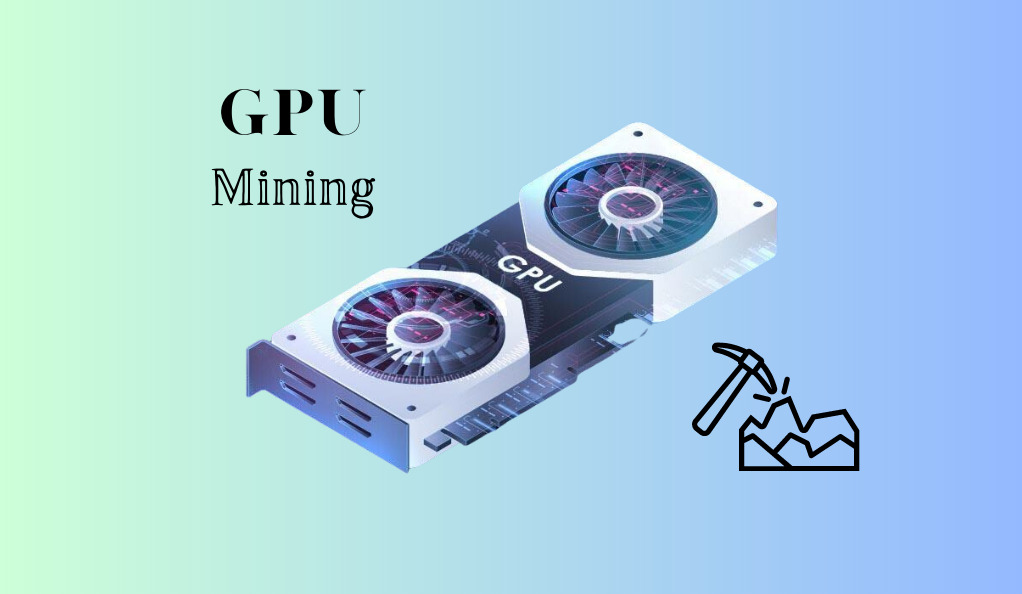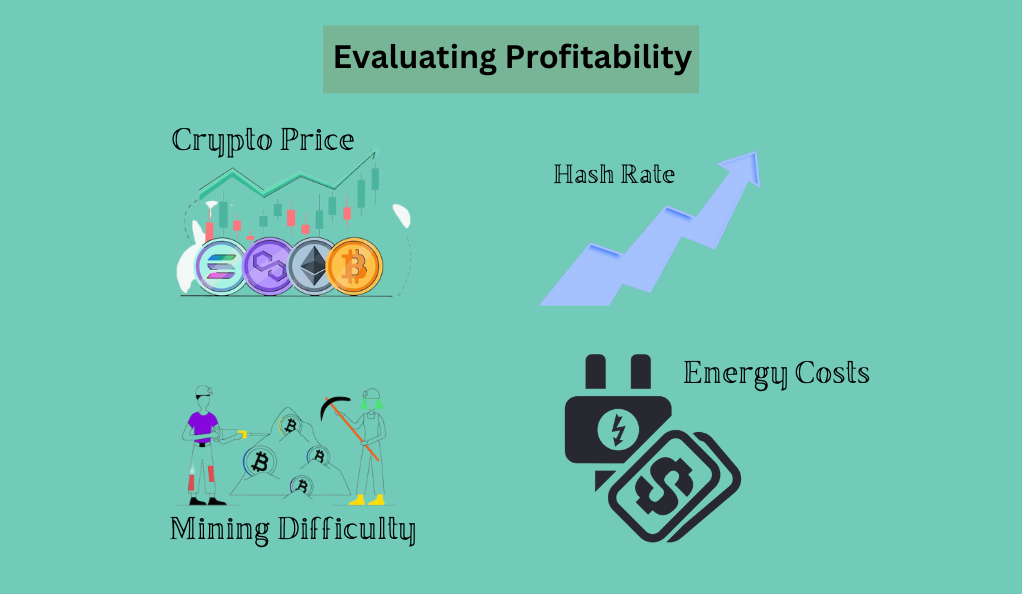Cryptocurrency mining is a foundational concept in the world of digital currencies. It’s not just about creating new coins; it plays a pivotal role in validating transactions, securing networks, and maintaining the integrity of blockchain technology. In this comprehensive guide, we’ll take a deep dive into the intricate world of cryptocurrency mining, exploring its fundamental principles, methods, and significance.
What is Cryptocurrency Mining?
At its core, cryptocurrency mining is the process of verifying transactions on a blockchain network and adding them to a distributed ledger. This process serves multiple purposes, such as preventing double-spending of digital currency and ensuring the security and integrity of the network.
Imagine a digital ledger where transactions are recorded. Just like with physical currencies, when someone spends cryptocurrency, the digital ledger must reflect the transfer by debiting one account and crediting another. However, the challenge with digital platforms is their susceptibility to manipulation. This is where cryptocurrency mining comes in.
Bitcoin’s distributed ledger, for instance, allows only verified miners to update transactions on the digital ledger. This additional responsibility of securing the network from double-spending is what sets cryptocurrency mining apart.
The Role of Miners
Miners, in the context of cryptocurrency, are individuals or entities that participate in the process of transaction validation. They compete to solve complex mathematical equations known as cryptographic hashes. Successfully solving these equations allows them to validate transactions and add them to the blockchain.
This process also involves generating new coins as a reward for miners’ efforts in securing the network. Unlike traditional currencies that are issued by central authorities, cryptocurrencies rely on distributed networks where miners collectively validate transactions and maintain the ledger’s integrity.
Proof-of-Work: The Key Consensus Protocol
Central to the process of cryptocurrency mining is the consensus protocol known as Proof-of-Work (PoW). PoW ensures that miners must perform a significant amount of computational work before adding transactions to the blockchain. This computational work serves as proof that they have contributed to the network’s security.
In the PoW system, miners compete to solve a complex mathematical puzzle. The first miner to solve the puzzle gets the privilege of adding a new block of transactions to the blockchain and is rewarded with newly minted coins. This competitive nature ensures the decentralization and security of the network.
Mining Hardware and Methods
The tools used for cryptocurrency mining have evolved over time. In the early days, simple CPUs were sufficient for mining. However, as cryptocurrencies gained popularity, more powerful hardware was needed to solve increasingly complex cryptographic puzzles. This led to the development of GPUs (graphics processing units) and specialized ASIC (application-specific integrated circuit) miners.
Comparison of Mining Methods:
| Method | Pros | Cons |
|---|---|---|
| CPU Mining | Low entry cost, suitable for beginners | Slow and inefficient for complex computations |
| GPU Mining | Higher processing power, versatile | Consumes more power, may have high initial cost |
| ASIC Mining | Extremely powerful, specialized for mining | Expensive, less versatile, may become obsolete |
| Cloud Mining | No need for hardware, hands-free approach | Relies on third-party services, potential scams |
Understanding the Basics of Crypto Mining
Cryptocurrency mining is a multifaceted process that goes beyond the surface-level notion of creating new coins. To truly grasp the intricacies of mining, we must delve deeper into its essential components. In this section, we will explore the foundational elements of cryptocurrency mining, including transaction validation, the role of miners, and the significance of distributed ledgers.
Transaction Validation and Blockchain
At the heart of cryptocurrency mining is the validation of transactions. When a user initiates a cryptocurrency transaction, it is broadcasted to the network for verification. Miners play a crucial role in ensuring the legitimacy of these transactions before they are added to the blockchain.
The blockchain, often referred to as a digital ledger, is a chronological and immutable record of all transactions. Each block in the blockchain contains a set of transactions, and miners work to validate these transactions by solving complex cryptographic puzzles. Once a block is validated, it is added to the blockchain, and the transactions within it are considered confirmed.
Securing the Network: Preventing Double-Spending
One of the primary reasons for cryptocurrency mining is to prevent the double-spending problem. Double-spending occurs when a user spends the same digital currency more than once. In traditional centralized systems, this issue is mitigated by a central authority. However, in decentralized networks like cryptocurrencies, a different approach is needed.
Cryptocurrency mining addresses this challenge by introducing the concept of consensus. Miners compete to solve cryptographic puzzles, and the first one to solve it gets the right to add the block of transactions to the blockchain. This process requires a significant amount of computational power, making it extremely difficult for a single entity to manipulate the blockchain.
Decentralization and Trustlessness
Decentralization is a core principle of cryptocurrency networks. Unlike traditional financial systems that rely on central authorities, cryptocurrencies are decentralized, meaning no single entity has control over the entire network. This decentralization is achieved through the distributed ledger, which is maintained by miners across the network.
The distributed ledger ensures that no single point of failure exists. Transactions are verified by multiple miners, and consensus is reached through the PoW protocol. This trustless system eliminates the need for intermediaries and fosters transparency and security.
Transaction Verification: A Mathematical Challenge
The process of validating transactions through mining involves solving complex mathematical problems. These problems are designed to be computationally intensive and require significant computational power to solve. Miners compete to find a solution, and the first one to succeed broadcasts their solution to the network. Other miners then verify the solution and agree on its validity.
The cryptographic nature of these challenges ensures that they are difficult to solve but easy to verify. This is a fundamental principle that underlies the security and integrity of the blockchain.
The Science Behind Mining: Proof-of-Work
Cryptocurrency mining operates on a foundational concept known as Proof-of-Work (PoW). This ingenious consensus protocol is at the heart of how transactions are validated, and the blockchain is maintained securely. In this section, we will unravel the mechanics of PoW, its significance, and how it ensures the integrity of decentralized networks.
Understanding Proof-of-Work
Proof-of-Work is a cryptographic puzzle-solving process that miners engage in to validate transactions and secure the blockchain. The core idea is that miners must expend a significant amount of computational effort to find a solution to a complex mathematical problem. Once they find a solution, they present it to the network, and other miners verify its correctness.
The concept of “proof” in PoW refers to the computational effort expended to find the solution. This proof is presented as the solution itself, which can be easily verified by other participants in the network. The complexity of the mathematical problem is adjustable, allowing the network to control the rate at which new blocks are added to the blockchain.
Securing the Network through Difficulty
The difficulty of the mathematical problem is a crucial component of the PoW protocol. The higher the difficulty, the more computational power is required to find a solution. As more miners join the network, the difficulty automatically adjusts to maintain a consistent block generation rate.
This difficulty adjustment mechanism ensures that miners cannot flood the network with new blocks and overwhelm the system. It also prevents malicious actors from monopolizing the mining process. The intricate balance between difficulty, computational power, and block generation rate is what keeps the blockchain secure and decentralized.
Mining Competition and Consensus
PoW introduces healthy competition among miners. Multiple miners are simultaneously working to find a solution to the mathematical problem. The first miner to find a valid solution broadcasts it to the network, and other miners quickly verify and agree on the solution’s legitimacy.
This consensus mechanism ensures that only one version of the blockchain exists, as miners unanimously agree on the valid transactions. If a malicious miner attempts to alter a transaction, they would need to redo the computational work for that block and all subsequent blocks, which becomes increasingly difficult as the blockchain grows.
Energy Consumption and Environmental Concerns
One of the criticisms often associated with PoW is its energy consumption. The process of solving complex cryptographic puzzles requires a significant amount of computational power, which translates to electricity consumption. As a result, some argue that PoW-based cryptocurrencies contribute to environmental issues.
However, it’s important to note that this energy consumption is the very foundation of PoW’s security. The computational effort required to solve puzzles prevents malicious actors from easily altering the blockchain. Nevertheless, there are ongoing discussions within the cryptocurrency community to explore more energy-efficient consensus protocols, such as Proof-of-Stake.
Getting Started with Mining
Embarking on the journey of cryptocurrency mining requires careful preparation, understanding, and the right tools. Whether you’re a novice or an experienced enthusiast, this section will guide you through the essential steps of setting up your mining operation and becoming a part of the decentralized network.
Selecting the Right Equipment
The first step in getting started with mining is choosing the appropriate hardware. The type of cryptocurrency you intend to mine will determine the hardware you need. In the early days, mining could be done using standard CPUs. However, as cryptocurrencies gained popularity, the computational requirements increased, leading to the development of more powerful options.

- CPUs: Basic processors suitable for low-intensity mining.
- GPUs: Graphics processing units that offer higher computational power and versatility.
- ASICs: Specialized devices designed solely for mining specific cryptocurrencies.
The choice of hardware depends on factors such as the desired cryptocurrency, budget, and energy efficiency. Remember that mining hardware can be expensive, so careful consideration is essential.
Setting Up the Software
Once you have the hardware, the next step is to install the mining software. The software acts as an interface between your hardware and the cryptocurrency network. There are various mining software options available, each catering to different hardware configurations and cryptocurrencies.
Some popular mining software includes CGMiner, BFGMiner, and EasyMiner. Research and select a software that aligns with your hardware and chosen cryptocurrency.
Joining a Mining Pool
Mining individually can be challenging due to the increased competition and the resources required. Many miners opt to join mining pools to combine their computational power and increase their chances of mining a block. Mining pools distribute rewards among participants based on their contribution to the pool’s computing power.
Joining a mining pool provides a steady stream of income, although the rewards are shared. It also allows beginners to gain insight into the mining process without committing to a full-scale operation.
Creating a Wallet
Before you start mining, you need a cryptocurrency wallet to receive and store your earnings. Different cryptocurrencies have their own wallets, so choose a wallet that corresponds to the cryptocurrency you’re mining. Wallets can be software-based, hardware-based, or even web-based.
Ensure your wallet is secure and regularly backed up. Losing access to your wallet means losing access to your hard-earned cryptocurrencies.
Configuring and Starting Mining
With your hardware, software, pool, and wallet in place, it’s time to configure your mining software and start the process. Follow the instructions provided by the mining software to input the necessary details, including the mining pool’s address, your wallet address, and other settings.
Once configured, your hardware will begin solving mathematical puzzles, validating transactions, and contributing to the network’s security. Keep an eye on your mining rig’s performance and make any necessary adjustments to ensure optimal results.
Exploring Different Mining Methods
Cryptocurrency mining is not a one-size-fits-all endeavor. As the landscape of digital currencies evolves, so do the methods of mining. In this section, we’ll explore the various mining methods available, their pros and cons, and how they cater to different types of miners and cryptocurrencies.
CPU Mining: The Beginner’s Approach
CPU mining, or Central Processing Unit mining, is the most basic form of mining and is often considered a beginner-friendly option. It involves using your computer’s CPU to solve the mathematical puzzles required for transaction validation. While CPU mining requires minimal investment, it’s not as efficient as other methods.
GPU Mining: Power and Versatility
GPU mining, or Graphics Processing Unit mining, takes things a step further by using the processing power of graphic cards. GPUs are more powerful than CPUs and are capable of handling more complex mathematical problems. This method gained popularity due to its efficiency and versatility.

ASIC Mining: Specialized Efficiency
Application-Specific Integrated Circuit (ASIC) mining is the most advanced and efficient method. ASIC miners are designed specifically for mining certain cryptocurrencies, making them incredibly powerful in solving cryptographic puzzles. They outperform CPUs and GPUs in terms of speed and energy efficiency.
Cloud Mining: A Hands-Free Approach

Cloud mining offers a hands-free alternative for those who don’t want to invest in physical hardware. In cloud mining, you rent mining power from a remote data center, and the provider takes care of hardware maintenance and operation. However, this method comes with its own set of risks and considerations.
Comparing the Methods:
| Method | Pros | Cons |
|---|---|---|
| CPU Mining | Low entry cost, beginner-friendly | Slow and inefficient for complex computations |
| GPU Mining | Higher processing power, versatile | Consumes more power, may have high initial cost |
| ASIC Mining | Extremely powerful, specialized efficiency | Expensive, less versatile, may become obsolete |
| Cloud Mining | No need for hardware, convenient | Relies on third-party services, potential scams |
Choosing the Right Method
The choice of mining method depends on factors such as the cryptocurrency you intend to mine, your budget, and your technical expertise. Beginners often start with CPU or GPU mining, while experienced miners may opt for ASICs for increased efficiency. Cloud mining can be a good option for those seeking convenience.
As the cryptocurrency landscape continues to evolve, new mining methods may emerge, and existing methods may undergo changes. Stay informed and adapt your strategy accordingly to maximize your mining experience and potential rewards.
The Role and Benefits of Mining Pools
Cryptocurrency mining has evolved beyond individual efforts, leading to the emergence of mining pools. Mining pools offer a collective approach to mining, allowing miners to combine their computational power and increase their chances of earning rewards. In this section, we’ll delve into the role of mining pools, their benefits, and how they contribute to the decentralization of cryptocurrencies.
The Concept of Mining Pools
Mining pools are collaborative networks of miners who work together to solve cryptographic puzzles and validate transactions. Instead of mining individually, miners contribute their computational power to the pool. When the pool successfully mines a block, the rewards are distributed among participants based on their contribution.
The creation of mining pools was driven by the increasing difficulty of solving mathematical puzzles and the desire to provide a steady income stream for miners. By pooling resources, miners can collectively solve puzzles more quickly and have a higher chance of receiving rewards.
Enhancing Chances of Success
One of the primary benefits of mining pools is the increased likelihood of successfully mining a block. As the network’s difficulty increases, individual miners may find it challenging to solve puzzles on their own. In a pool, however, the combined computational power greatly improves the chances of finding solutions and receiving rewards.
Mining pools operate on a principle of “work sharing.” Miners work on solving puzzles collectively, and when a solution is found, the rewards are distributed proportionally to each miner’s contribution. This ensures a steady income stream for participants, even if individual miners may not mine a block on their own.
Choosing the Right Mining Pool
Selecting the right mining pool is essential for maximizing rewards. Each mining pool has its own fee structure, payout methods, and supported cryptocurrencies. It’s important to research and compare different pools before joining one.
Consider factors such as the pool’s size, reputation, and how rewards are distributed. Some pools offer a PPLNS (Pay Per Last N Shares) payout method, while others use a proportional or score-based system. Additionally, ensure that the pool supports the cryptocurrency you intend to mine.
Contributing to Decentralization
Contrary to concerns that mining pools concentrate power, they actually contribute to the decentralization of cryptocurrency networks. While individual miners may not have the resources to mine blocks independently, mining pools allow them to collectively participate in network validation and consensus.
By distributing rewards among a diverse group of participants, mining pools prevent centralization and foster a more equitable distribution of mining power. This aligns with the decentralized principles that cryptocurrencies aim to achieve.
Is Cryptocurrency Mining Worth It?
The allure of cryptocurrency mining often comes with the promise of financial gains and the excitement of participating in the digital economy. However, before embarking on a mining journey, it’s crucial to assess the profitability, costs, and potential challenges associated with the endeavor. In this section, we’ll explore the factors to consider when evaluating whether cryptocurrency mining is worth the investment.
Evaluating Profitability
The profitability of cryptocurrency mining is influenced by several key factors:

- Cryptocurrency Price: The price of the cryptocurrency you’re mining directly impacts your potential earnings. Higher prices can lead to greater rewards, but they also attract more miners, increasing competition.
- Mining Difficulty: As more miners join the network, the difficulty of solving cryptographic puzzles increases. This can result in lower rewards for individual miners and a longer time to recoup investments.
- Hash Rate: Your mining rig’s hash rate determines how many calculations it can perform per second. A higher hash rate increases the likelihood of successfully mining blocks.
- Energy Costs: Mining consumes a significant amount of electricity. Energy costs can eat into your profits, especially in regions with high electricity rates.
Consideration for Equipment and Maintenance
The initial cost of mining equipment can be substantial. GPUs and ASICs can require a significant investment, which may take time to recover through mining rewards. Additionally, hardware maintenance and cooling solutions are essential to ensure optimal performance and prevent overheating.
Environmental Impact and Sustainability
Cryptocurrency mining’s energy consumption has raised concerns about its environmental impact. Some cryptocurrencies, like Bitcoin, require massive amounts of electricity to sustain their networks. As the world shifts toward greener energy solutions, the carbon footprint of mining becomes a relevant consideration.
Market Volatility
Cryptocurrency markets are known for their volatility. While high volatility can lead to substantial profits during bull markets, it also exposes miners to potential losses during downturns.
Regulatory and Legal Considerations
Mining regulations vary by jurisdiction. It’s essential to research and understand the legal and tax implications of mining in your country. Failure to comply with regulations could lead to financial penalties.
Long-Term Outlook
When assessing the worth of cryptocurrency mining, it’s important to consider both short-term gains and long-term sustainability. Factors like technological advancements, network upgrades, and shifts in consensus protocols (e.g., from Proof-of-Work to Proof-of-Stake) can impact mining profitability and the viability of certain cryptocurrencies.
Legal and Tax Implications of Crypto Mining
As cryptocurrency mining gains popularity, governments around the world are grappling with how to regulate and tax this innovative activity. While mining offers the potential for financial gains, it’s important to understand the legal and tax implications associated with mining operations. In this section, we’ll delve into the legal considerations and tax responsibilities that miners should be aware of.
Regulatory Landscape
Cryptocurrency mining regulations vary significantly from one jurisdiction to another. Some countries embrace and encourage mining as a form of economic activity, while others impose strict regulations or outright bans. It’s crucial to research and understand the legal status of mining in your country before starting a mining operation.
Key legal considerations include:
- Licensing and Permits: Some countries require miners to obtain licenses or permits to operate mining equipment. Failure to do so could result in legal consequences.
- Environmental Regulations: Mining operations can consume significant amounts of energy, leading to environmental concerns. Some jurisdictions may have regulations in place to mitigate the environmental impact of mining.
- Import and Export Laws: If you’re importing or exporting mining equipment, be aware of any regulations related to customs duties, taxes, and restrictions on certain types of equipment.
Tax Considerations
Cryptocurrency mining can have tax implications that vary depending on your country’s tax laws and how you approach mining:

- Income Tax: In many countries, the rewards you receive from mining are considered income and are subject to income tax. It’s essential to keep accurate records of your mining activities, including the value of the rewards received.
- Capital Gains Tax: If you hold onto the mined cryptocurrencies and their value increases before you sell them, you might be subject to capital gains tax when you eventually sell them.
- Mining Expenses: In some cases, you may be able to deduct certain mining-related expenses from your taxable income, such as electricity costs and hardware depreciation.
- Reporting Requirements: Some countries require individuals to report their cryptocurrency holdings and mining activities. Failure to accurately report these activities could lead to penalties.
Cryptocurrency Mining as a Business
If you engage in cryptocurrency mining as a business, rather than as an individual hobby, additional tax considerations come into play:
- Business Taxes: You may need to register your mining operation as a business and pay business taxes on your mining income.
- Employee Taxes: If you hire employees to assist with your mining operation, you’ll need to adhere to employment tax regulations.
Seeking Professional Advice
Given the complex and evolving nature of cryptocurrency regulations and tax laws, it’s highly recommended to consult with a legal and tax professional who specializes in cryptocurrency matters. They can provide tailored advice based on your specific circumstances and the legal landscape in your jurisdiction.
Conclusion
As the cryptocurrency landscape continues to evolve, the future of cryptocurrency mining holds both promise and challenges. While Proof-of-Work (PoW) has been the dominant consensus mechanism, there’s a growing interest in more energy-efficient alternatives like Proof-of-Stake (PoS). PoS aims to reduce the energy consumption associated with mining while maintaining network security. This transition reflects the industry’s commitment to sustainability and aligns with the global shift towards greener technologies. Additionally, advancements in mining hardware, increased regulatory clarity, and ongoing technological innovation are likely to shape the trajectory of cryptocurrency mining, ensuring its relevance in the ever-changing digital economy.
At axerunners.com, our goal is to furnish well-rounded and trustworthy information regarding cryptocurrency, finance, trading, and stocks. Nonetheless, we avoid providing financial advice and instead encourage users to conduct their own research and meticulous verification.
Read More












+ There are no comments
Add yours